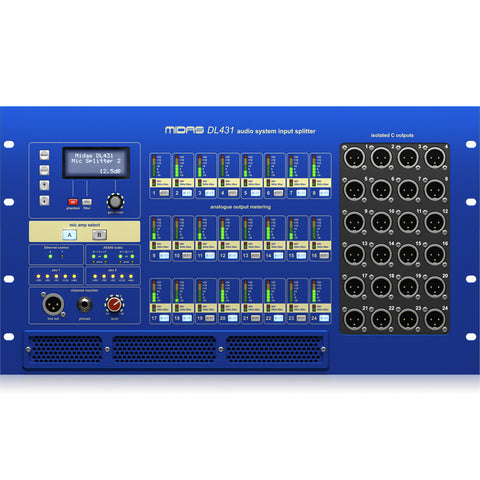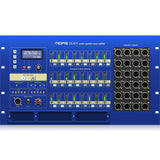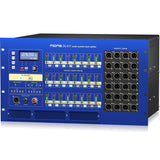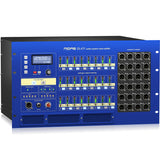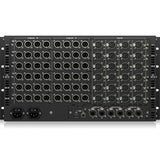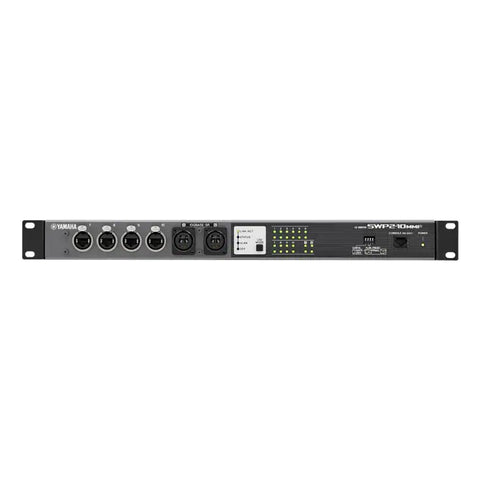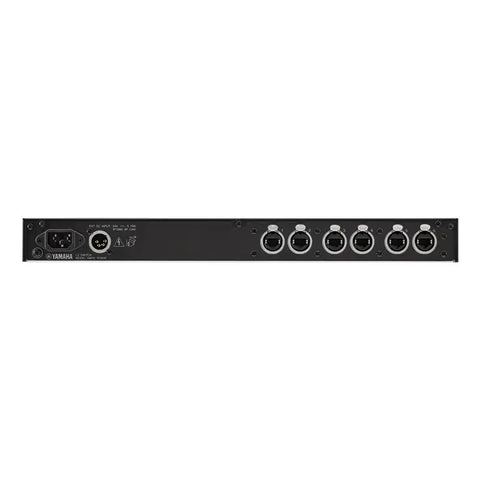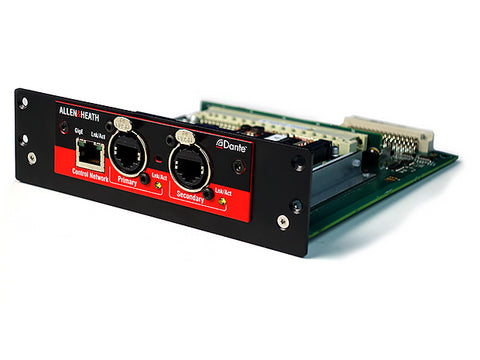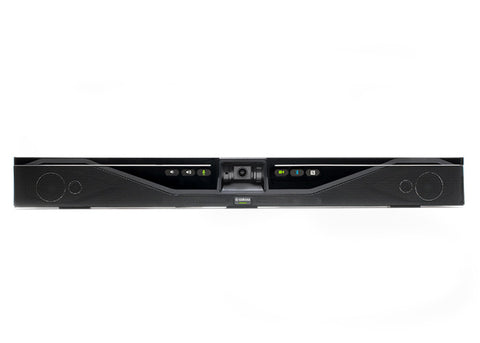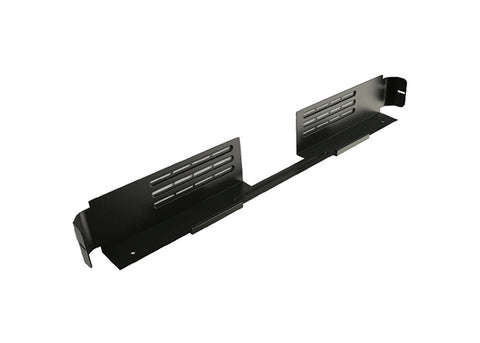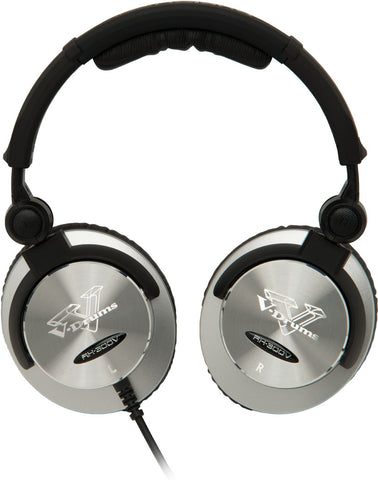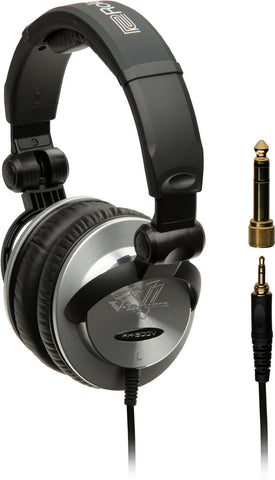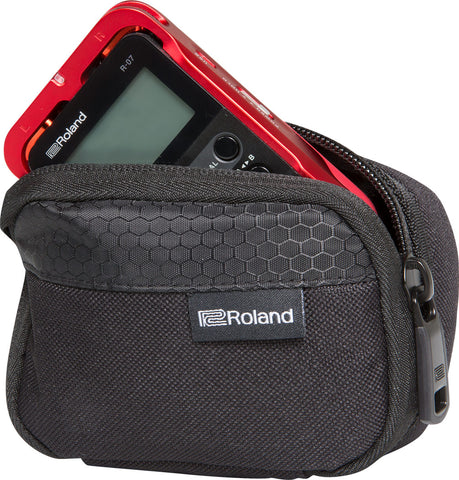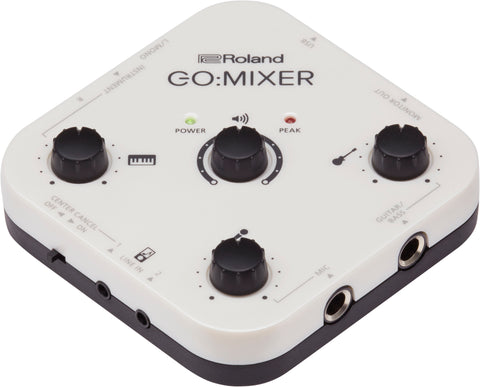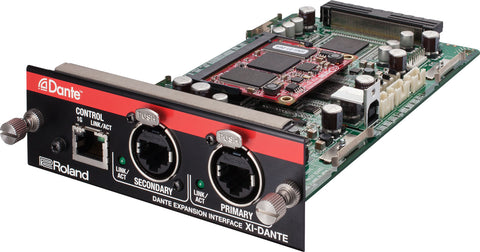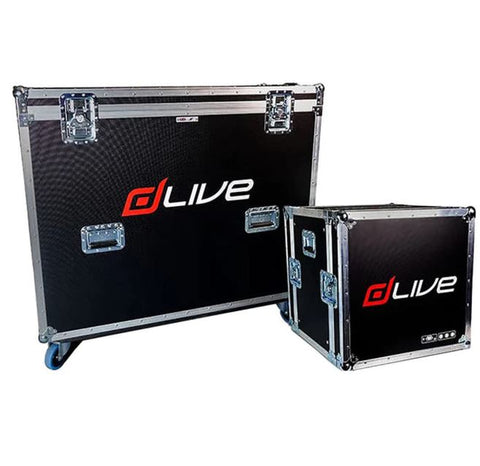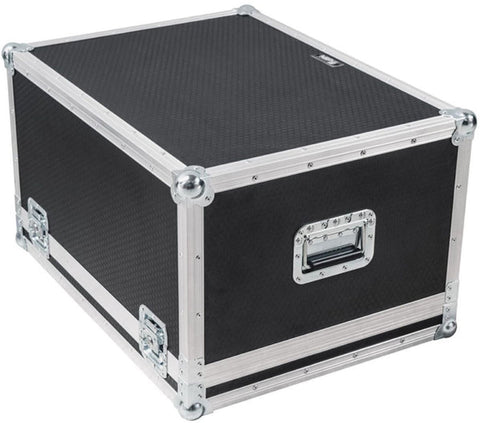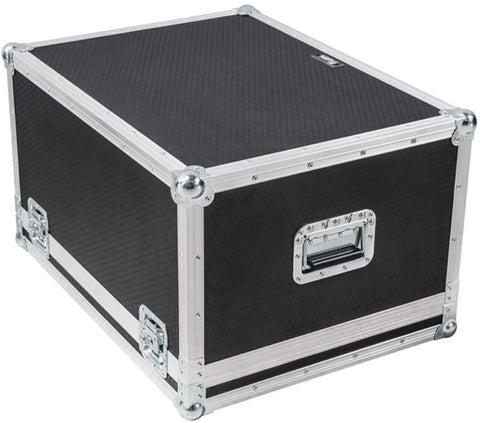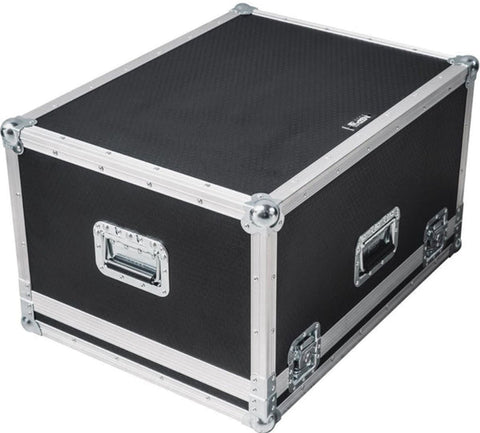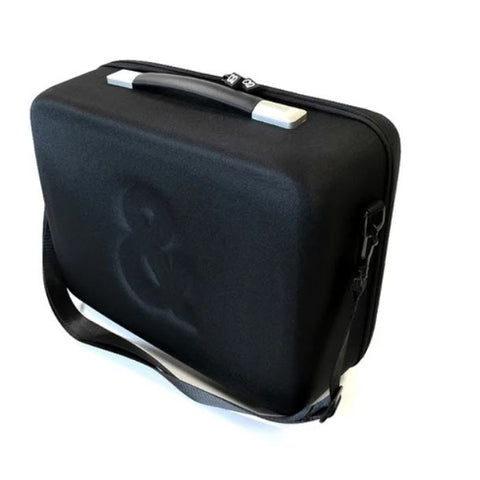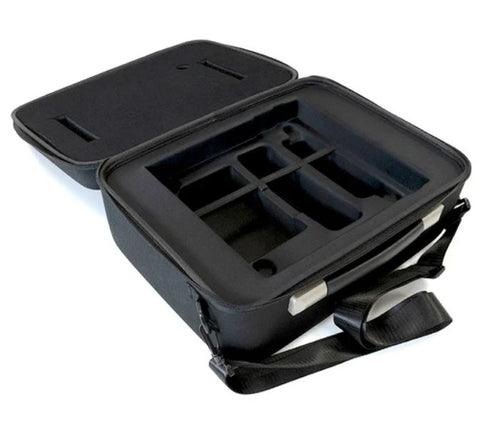MIDAS DL431-UL 24 Input, 72 Output Active Microphone Splitter with Independent Midas Microphone Preamplifiers (DL431-UL)
Vendor: Midas
Available

MIDAS DL431-UL 24 Input, 72 Output Active Microphone Splitter with Independent Midas Microphone Preamplifiers (DL431-UL)
Behold the DL431, a stalwart 6U 19" fixed-configuration rack I/O unit meticulously engineered for the intricate art of splitting microphone signals. Boasting an arsenal of 24 mic/line level inputs and an impressive 72 line-level outputs, it heralds the iconic Midas sound quality, leveraging battle-tested technologies forged through endless tours and performances. This marvel houses not just two independent Midas microphone preamplifiers with 2.5 dB gain increments, but also a steadfast third fixed-gain Midas Microphone preamplifier for each input channel. Its features are a symphony of technological prowess—a duo of dual redundant AES50 network interfaces, paired with dual redundant Ethernet control ports and a MIDI Interface (In, Out, Thru). The DL431 stands as the ultimate companion to the Midas PRO3, PRO6, PRO9, XL8, and PRO X digital consoles. It serves as the linchpin for a seamless digital snake connection, orchestrating a harmonious link from the Front of the House to the stage.
Award-Winning Midas Microphone Preamplifier
The Midas microphone preamplifier stands as the quintessence of the renowned Midas sound, revered by top-tier live sound and recording engineers. With over four decades of design mastery and a meticulous selection of premium-grade components, it embodies an acclaimed warmth and depth, uncovering nuanced ambiance, preserving spatial orientation, and impeccably capturing a precise sonic landscape. Esteemed for its award-winning sound, this preamplifier has been the catalyst behind the finest works of generations of live sound engineers, crafting sonic tapestries that enrapture audiences worldwide. Recognizing the pivotal role of the microphone preamplifier as the genesis of pristine sound, the DL431 proudly integrates the latest iteration of Midas microphone preamplifiers. These faithfully replicate every sonic nuance, ensuring no facet of performance goes unnoticed. Transparency, pristine clarity, minimal noise, and remarkable common-mode rejection characterize this timeless design. Throughout the years, countless mixing engineers have discovered that this robust and overload-tolerant design evolves when pushed to its limits. Its initially crystal-clear audiophile reproduction blossoms into a delicate balance of harmonics, unveiling a warm, organic sound experienced by millions of concert attendees and immortalized on numerous live albums across time.
Digital Audio Networking
Klark Teknik's SuperMAC, an AES50-compliant digital audio networking technology, stands as a paragon offering a multitude of advantages. It seamlessly delivers expansive channel counts, and remarkably low and predictable latencies, ensuring sample-synchronized and phase-aligned networked clock distribution. Additionally, it incorporates error detection and correction mechanisms, bolsters network redundancy, and simplifies both deployment and operational use. All these facets collectively cater to the exacting demands of live concert tours, meeting and exceeding expectations. The DL431 harmoniously interfaces with the complete spectrum of Midas PRO Series, XL8 digital consoles, and audio system engines. Moreover, its compatibility extends graciously to encompass any other 96 kHz-enabled AES50-equipped devices, fostering a versatile and inclusive ecosystem within the digital audio landscape.
Microphone Splitter
Each input connector integrated into the DL431 unit intricately channels into three distinct Midas microphone preamplifiers. Among these, two boast independent remote gain control and +48V phantom power switching capabilities, while the third sustain a fixed gain configuration tailored to drive the transformer-balanced analog output on the front panel. This designated output serves as the liaison point for interfacing with third-party recording or outside broadcast equipment. The two autonomous variable gain microphone preamplifiers lend themselves to remote control from disparate locations—imagine Front of House and Monitor mix positions—facilitating a tailored approach to managing sound. Additionally, each remotely adjustable microphone preamplifier conveniently offers a dedicated analog split output accessible on the DL431's rear panel. To bolster efficiency during system setup and validate signal integrity, a local channel monitoring feature is seamlessly integrated. It encompasses an inherent headphone amplifier and a separate line output, affording the ability to scrutinize incoming signals at their source—an indispensable tool aiding in the configuration of systems and confirming signal fidelity.
Remote Console or Front Panel Control
All configuration settings for DL431 can be set either remotely from the mixing console or directly via the intuitive and easy-to-understand front panel. DL431 features a front panel LCD with intuitive menu navigation for all configuration options with LED status indicators, which provide clear feedback on operational status over wide viewing angles and distances. A clear indication is provided showing power supply output rail condition and AES50 and Ethernet network connection status and activity. Each input channel has a dedicated selection switch and LED bar graph metering, plus indicators for phantom power and high pass filter status.
Built for the Road
Featuring a rugged steel 6U rackmount enclosure, the DL431 is designed for the rigours of live concert touring. Premium Neutrik connectors are used for reliable audio and network connections, night after night.
Auto-ranging universal switch-mode power supply
DL431 features dual-redundant power supplies, which are auto-voltage sensing for use on a worldwide basis and provide seamless switchover in the unlikely event of a loss of one power supply.
Architecture & Engineering Specifications
The interface unit is meticulously crafted for digital audio mixing applications, and meticulously fine-tuned for optimal performance in live settings. Featuring 24 input channels, each channel is equipped with three specialized microphone preamplifiers: two independently adjustable, remotely controlled variable gain preamps with precise 2.5 dB increments, and one fixed gain preamp. These preamps efficiently channel to a total of 72 outputs—variable gain preamps feed rear panel servo-balanced electronic outputs, while fixed gain preamps link to front panel transformer-isolated outputs, all through industry-standard XLR connectors. The unit operates flawlessly at a 96 kHz sampling rate. Designed to meet the highest standards, this interface unit supports a 100-megabit Ethernet frame-based digital audio network, ensuring dual redundancy and compliance with the Audio Engineering Society AES50-2011 standard. It boasts two dual redundant digital network audio interfaces, each equipped with independent phase-locked loop synchronization. Alongside these features, the unit provides two dual redundant Ethernet control ports and an industry-standard MIDI Interface (In Out Thru). Effortlessly configurable both locally and remotely, the interface unit offers an alphanumeric LCD, complemented by menu navigation buttons and LED indicators. These indicators not only reflect power supply output rail condition but also signify digital audio and control network connection status and activity. Each input channel comes equipped with a selection switch LED signal metering bar graph, offering LED indication for +48V phantom power and high pass filter status.
Adding to its functionality, the interface unit hosts a local channel monitoring facility inclusive of an integral headphone amplifier and a separate line output, enabling convenient monitoring of input channel signals. Engineered for global use, the unit incorporates two auto-ranging universal switch-mode power supplies with dual redundancy, ensuring seamless operation across diverse power configurations worldwide. Housed within a standard 6U 19" rackmount chassis, the interface unit's dimensions measure 483 mm wide x 402 mm deep x 266 mm high (19.0" x 15.8" x 10.5"), weighing in at approximately 21.5 kg (47.3 lbs). The unit necessitates installation in a rack frame or road case capable of securely supporting its weight, with all input/output and power connections arranged at the rear panel. Adequate space at the rear panel is recommended for convenient connection and disconnection of these elements. The power requirements range from 100 to 240 VAC at 50 to 60 Hz. The specified interface unit is unequivocally the MIDAS DL431, with no other alternative deemed acceptable.
PRODUCT FEATURES
-
24 channel microphone splitter with 2 electronically and 1 transformer balanced outputs per channel
-
3 award-winning Midas microphone preamplifiers per channel with switchable +48 V phantom power
-
2 independent dual redundant AES50 (X and Y) network ports
-
Local channel monitoring with integrated headphone amplifier
-
24 bit audio operation with 96 kHz sample rate
-
Remote operation up to 80 m via CAT5/5e cable
-
All settings programmable from front panel controls or console
-
PSU status indicator LEDs and configuration LCD display on front panel
-
Features Neutrik etherCON AES50 network ports
-
Rugged 6U rackmount chassis for durability in portable applications
-
Dual redundant auto-ranging universal switch-mode power supplies
General Specifications
| Dimensions |
6U x 402 mm deep |
| Net weight |
21.5 kg |
| Power requirements |
100 to 240 VAC, 50 to 60 Hz |
| Operating temperature range |
+5°C to +40°C |
| Storage temperature range |
-20°C to +60°C |
| Dynamic range (DL431 analogue input to DL431 analogue output) |
124 dB unweighted |
| Dynamic range (DL431 analogue input to DL451 analogue output) |
110 dB unweighted |
Inputs and Outputs
| Analogue inputs | |
| Analogue outputs | |
| Digital (system) outputs |
 USD
USD EUR
EUR
 AUD
AUD
 GBP
GBP
 JPY
JPY

